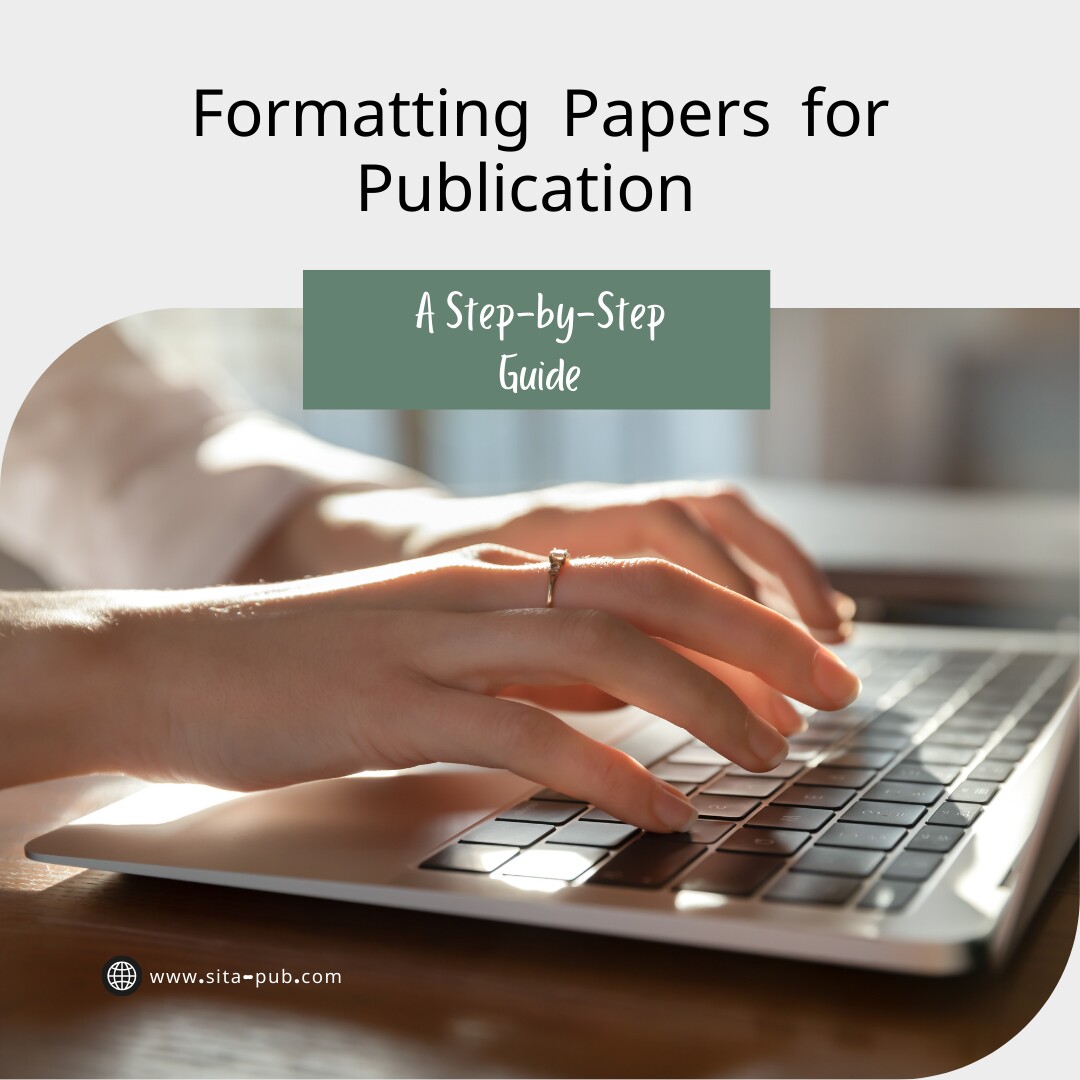تنسیق الأوراق البحثیه للنشر: دلیل خطوه بخطوه


یُعتبر تقدیم بحثک العلمی إلى مجله مرحله مشوقه، ولکن من الضروری التأکد من أن مقالک یتوافق تمامًا مع إرشادات التنسیق الخاصه بالمجله. عدم الالتزام بهذه الإرشادات یمکن أن یؤدی إلى الرفض الفوری، حتى وإن کان بحثک متمیزًا. إلیک کیفیه تنسیق مقالک لضمان النجاح:
زیاره موقع المجله: ابحث عن قسم "إرشادات للمؤلفین" أو "تعلیمات التقدیم". هذا هو المرجع الأساسی لتنسیق مقالک.
تحمیل القالب (إن توفر): تقدم العدید من المجلات قوالب جاهزه للتنسیق. استخدام القالب یُوفر الوقت ویساعدک على تجنب الأخطاء الشائعه.
اقرأ بعنایه: انتبه للتفاصیل التالیه:

الخط: نوع الخط، حجمه، ونمطه (مثال: Times New Roman، حجم 12، عادی)
الهوامش: العلویه، السفلیه، الیمنى، والیسرى
تباعد الأسطر: مفرد أو مزدوج
العناوین: مستویات العناوین، حجم الخط، التنسیق
نمط التوثیق: وهذا عنصر بالغ الأهمیه! الأنماط الشائعه تشمل:
APA (الجمعیه الأمریکیه لعلم النفس): تُستخدم فی العلوم الاجتماعیه، التربیه، وعلم النفس.
MLA (جمعیه اللغه الحدیثه): تُستخدم فی العلوم الإنسانیه مثل الأدب واللغه والدراسات الثقافیه.
Chicago: تُستخدم فی التاریخ، الأعمال، وبعض العلوم الاجتماعیه.
Vancouver: تُستخدم فی الطب وعلوم الحیاه.
أنماط أخرى محدده: بعض المجلات تستخدم أنماط توثیق خاصه بها، لذا تأکد من مراجعتها بعنایه.
الجدوال والرسوم: تنسیقها، تسمیتها، وموقع إدراجها فی النص
الحد الأقصى للکلمات: التزم بالعدد المحدد. تجاوزه قد یؤدی إلى رفض المقال تلقائیًا.

استخدم برنامج معالجه نصوص: مثل Microsoft Word أو Google Docs لتطبیق التنسیق بدقه.
استخدم القالب (إن توفر): البدء بالقالب یمنحک أفضلیه کبیره فی التنسیق الصحیح منذ البدایه.
اتبع دلیل الأسلوب: وراعِ الإرشادات التالیه:
صفحه العنوان: یجب أن تتضمن العنوان، أسماء المؤلفین، مؤسساتهم، ومعلومات الاتصال.
الملخص: ملخص موجز للبحث، غالبًا بحد معین للکلمات.
الکلمات المفتاحیه: أدرج کلمات مفتاحیه ذات صله لتسهیل العثور على بحثک.
المقدمه: قدم للقارئ فکره واضحه عن سؤال البحث وأهمیته.
مراجعه الأدبیات: لخّص وقیّم الدراسات السابقه المرتبطه بموضوعک.
المنهجیه: وصف دقیق لطریقه البحث، الأدوات، والخطوات التی اتبعتها.
النتائج: اعرض نتائجک بوضوح وحیادیه، مدعومه بالجداول، الرسوم، أو التحلیلات الإحصائیه.
المناقشه: فسر نتائجک، وناقش أهمیتها، وقارنها بالدراسات السابقه.
الاستنتاج: لخّص نتائجک الرئیسیه وأعد تأکید فرضیتک أو أطروحتک.
المراجع: قائمه بجمیع المصادر التی استشهدت بها، باستخدام نمط التوثیق المطلوب. یمکنک استخدام برامج إداره المراجع مثل Zotero أو Mendeley أو EndNote لتسهیل هذه الخطوه.
المراجعه الدقیقه: تحقق من التنسیق، الإملاء، والنحو. یمکن لشخص آخر ملاحظه أخطاء لم تنتبه إلیها.
استخدم مدقق التنسیق: تحتوی بعض البرامج مثل Word على أدوات تدقیق تنسیق مدمجه.
احصل على رأی ثانٍ: اطلب من زمیل أو صدیق مراجعه تنسیق مقالک للتحقق من الدقه والاتساق.
اتبع تعلیمات التقدیم الخاصه بالمجله: اتبع تعلیماتهم بدقه، وتأکد من إرفاق جمیع المستندات المطلوبه.
قدّم المخطوطه بثقه: الآن بعد أن تم تنسیقها بالشکل المطلوب.

تذکّر: التنسیق عامل مهم فی ترک انطباع أولی جید لدى المحررین والمراجعین. الالتزام بإرشادات المجله یزید من فرص قبول بحثک ویعکس احترافیتک کباحث. إنها تفاصیل صغیره تحدث فرقًا کبیرًا فی مسار النشر.
هل ترغب فی التأکد من أن ورقتک البحثیه مُنسقه بشکل مثالی للنشر؟ أکادیمیه سیتا هنا لمساعدتک!
نحن خبراء فی تنسیق الأوراق البحثیه والمقالات العلمیه، مهما کان نوع المجله التی تستهدفها. سواء کنت تسعى للنشر فی مجله مرموقه مُحکمه مثل Web of Science أو Scopus، أو تبحث عن مجلات مفتوحه الوصول (Open Access) للوصول لجمهور أوسع – فنحن نقدم لک الدعم الکامل.
سنساعدک فی:
اختیار المجلات المناسبه التی تتماشى مع موضوع بحثک وطموحک العلمی.
ضمان تنسیق المقال بشکل احترافی یلفت أنظار المحررین.
التعامل مع تفاصیل التوثیق (خاصه فیSSCI)، مما یوفر لک الوقت ویزید من فرص قبول بحثک.

لماذا تختار أکادیمیه سیتا؟

فریق من المحترفین البشر

ضمان الجوده

التسلیم فی الوقت المحدد

ضمان الرضا
إذا کان لدیک أی أسئله، استفسارات، أو ترغب فی معرفه المزید عن خدماتنا، فلا تتردد فی التواصل معنا. فریقنا المخصص مستعد لمساعدتک.